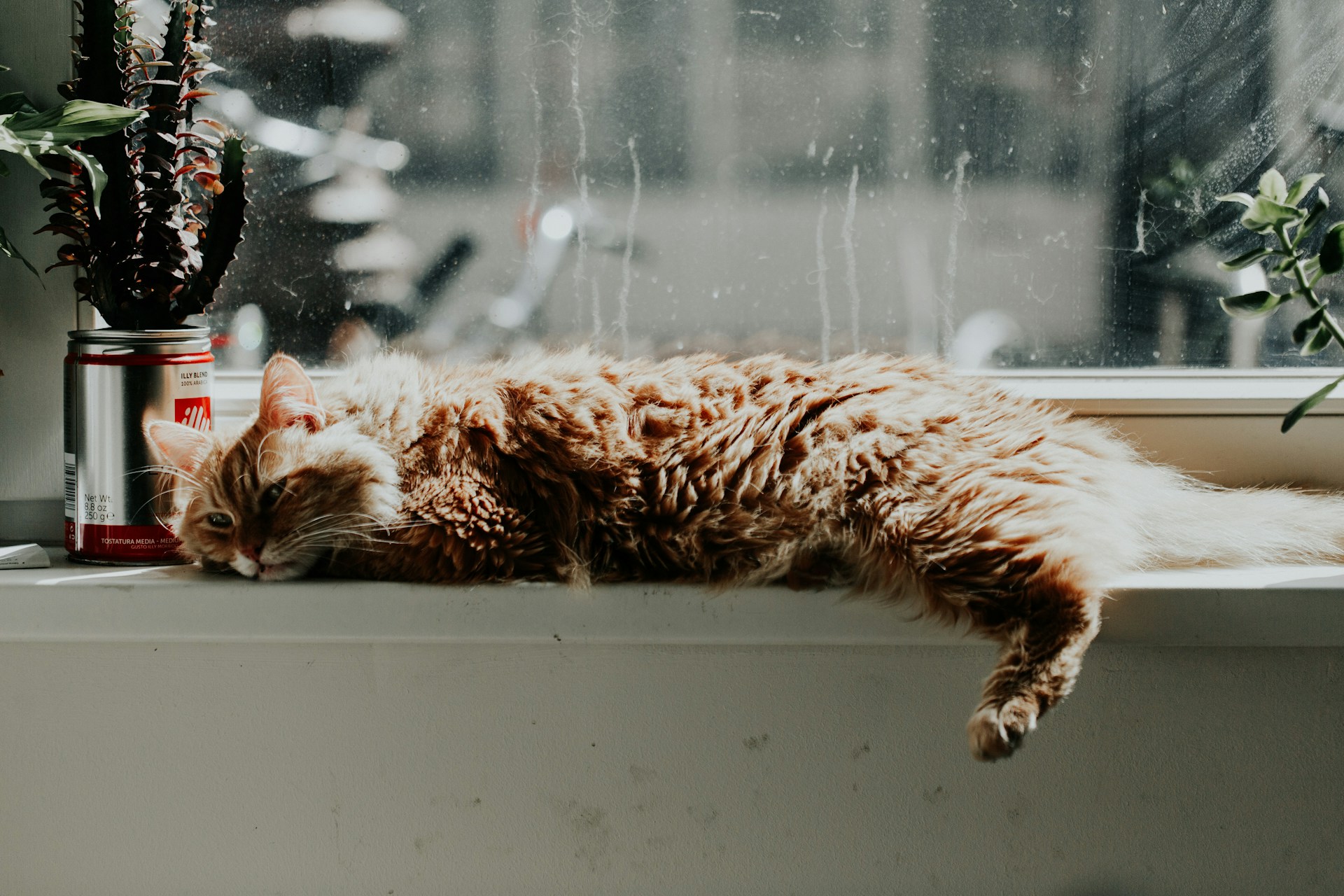Ever wondered what your indoor cat does all day? If so, you’re not alone. Indoor cats lead fascinating lives that often go unnoticed. Understanding these secret lives can significantly improve their well-being and your bond with them. In this blog post, we’ll explore the hidden world of indoor cats, providing you with insights, tips, and examples to help you better understand your feline friend.
Table of Contents

The Instinctual Cat
Indoor cats may seem domesticated, but they still carry the instincts of their wild ancestors. These instincts drive their behavior, influencing everything from their hunting tactics to their territorial nature. Satisfying these instincts in a home environment is crucial for their happiness.
Hunting Instincts
Cats are natural hunters. Even if your indoor cat has never seen a real mouse, the hunting instinct is hardwired into their DNA. Toys that mimic prey, like feather wands or laser pointers, can help satisfy this natural urge. These activities not only keep them entertained but also provide much-needed exercise.
Territorial Behavior
Cats are territorial animals. They mark their territory through scent glands located on their face, paws, and tail. Understanding this behavior can help you create a comfortable and safe space for your cat. Providing multiple scratching posts and perches can help them feel secure in their environment.
The Need for Exploration
Cats are curious creatures. They love to explore their surroundings. Creating an enriching environment with climbing trees, hiding spots, and interactive toys can satisfy their exploratory nature. This not only keeps them engaged but also mentally stimulated.
A Day in the Life
What does a typical day look like for an indoor cat? It’s a mix of sleep, play, and feeding routines. Understanding these patterns can help you provide a more fulfilling life for your feline friend.
Sleep Patterns
Cats are known for their love of sleep. On average, they sleep 12-16 hours a day. This might seem excessive, but it’s perfectly normal. Providing comfortable sleeping spots in various locations around your home can make nap time even more enjoyable for them.
Playtime
Playtime is essential for an indoor cat’s health and happiness. It mimics hunting behaviors and provides both physical and mental exercise. Engaging in interactive play sessions for at least 15 minutes a day can make a big difference in your cat’s life. Toys that simulate prey, like feather wands or motorized mice, can be particularly effective.
Feeding Routines
Feeding routines should be consistent to maintain a cat’s digestive health. Some cats prefer multiple small meals throughout the day, while others do well with two larger meals. High-quality, balanced diets that meet their nutritional needs are crucial. Adding puzzle feeders can also make mealtime more engaging and satisfying.

Health and Happiness
Ensuring the health and happiness of your indoor cat involves several key elements, including diet, exercise, and mental stimulation.
Balanced Diet
A balanced diet is the foundation of good health. Choose high-quality cat food that meets their nutritional needs. Consult your vet for recommendations tailored to your cat’s age, weight, and health conditions. Treats should be given sparingly and should never replace a balanced meal.
Regular Exercise
Exercise is vital for maintaining a healthy weight and preventing boredom. Interactive toys, climbing trees, and regular play sessions can help keep your cat active. Laser pointers, feather wands, and motorized toys are great for encouraging movement.
Mental Stimulation
Mental stimulation is just as important as physical exercise. Puzzle toys, interactive games, and training sessions can keep your cat’s mind sharp. Teaching your cat simple tricks or commands can also provide mental enrichment and strengthen your bond.
The Human-Cat Bond
The relationship between indoor cats and their owners is unique and special. Strengthening this bond can lead to a happier, healthier life for both of you.
Quality Time
Spending quality time with your cat can strengthen your bond. Simple activities like brushing their fur, playing games, or just sitting together can make a big difference. Cats are social animals and enjoy companionship.
Communication
Understanding your cat’s body language and vocalizations can improve your communication. Pay attention to their signals and respond accordingly. This can help you address their needs and build trust.
Emotional Support
Indoor cats provide emotional support to their owners. Their presence can reduce stress and anxiety. In return, providing a stable, loving environment can enhance their emotional well-being. Make sure they have a quiet, safe space to retreat to when they need alone time.
Conclusion
Understanding the secret lives of indoor cats can greatly enhance their quality of life and strengthen your bond with them. From satisfying their natural instincts to ensuring their health and happiness, every effort you make can lead to a more fulfilling life for your feline friend. By taking the time to understand their needs and behaviors, you can create a loving, enriching environment for your indoor cat.
Ready to deepen your knowledge? Consider reading more articles, joining cat communities, or consulting with a vet to ensure you’re providing the best care possible.
Enrichment Activities
To keep your indoor cat engaged, it’s important to provide a variety of enrichment activities that cater to their instincts and curiosity. Incorporating different types of stimulation can prevent boredom and encourage natural behaviours.
Interactive Feeding
One effective way to enrich your cat’s environment is through interactive feeding. Puzzle feeders or treat-dispensing toys challenge your cat and make mealtime more engaging. This not only slows down their eating but also stimulates their mind as they work for their food. Additionally, hiding small portions of their favourite treats around the house can encourage exploration and hunting instincts.
Sensory Enrichment
Cats experience the world primarily through their senses. By introducing new smells, textures, and sounds, you can provide mental stimulation. Consider rotating toys regularly so your cat encounters something “new” each time. You might also explore safe herbs like catnip or silver vine, which can excite and engage your cat’s senses, offering them a delightful olfactory experience.

Outdoor Access
If possible, consider providing safe outdoor access for your indoor cat. This can be achieved through catios, outdoor enclosures, or supervised walks on a harness. Such experiences can enrich their lives by allowing them to explore the sights, sounds, and scents of the outdoors while remaining safe from potential dangers.
By integrating these enrichment activities into your indoor cat’s daily routine, you can foster a happier, healthier, and more fulfilled feline companion. if you like this Read






